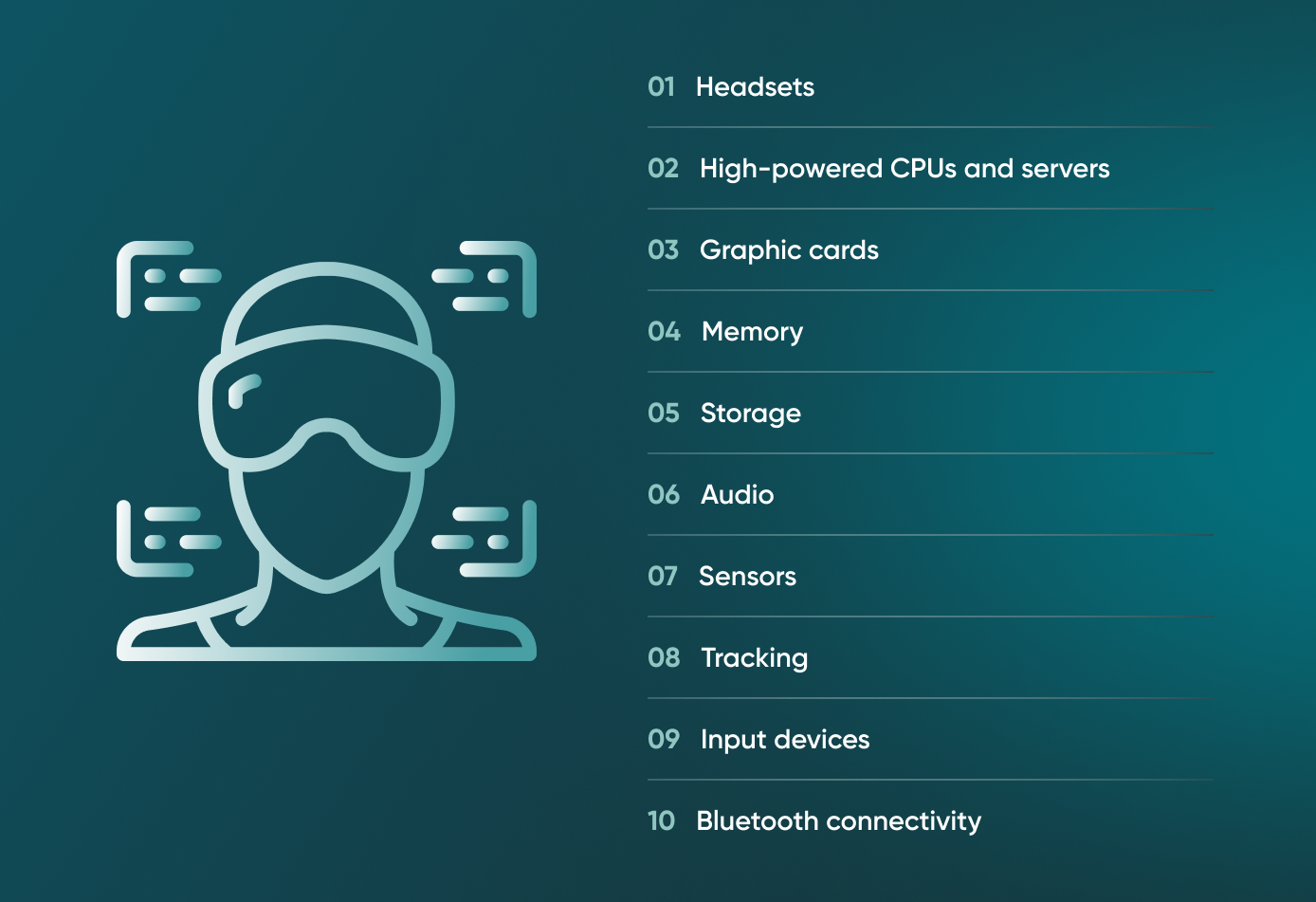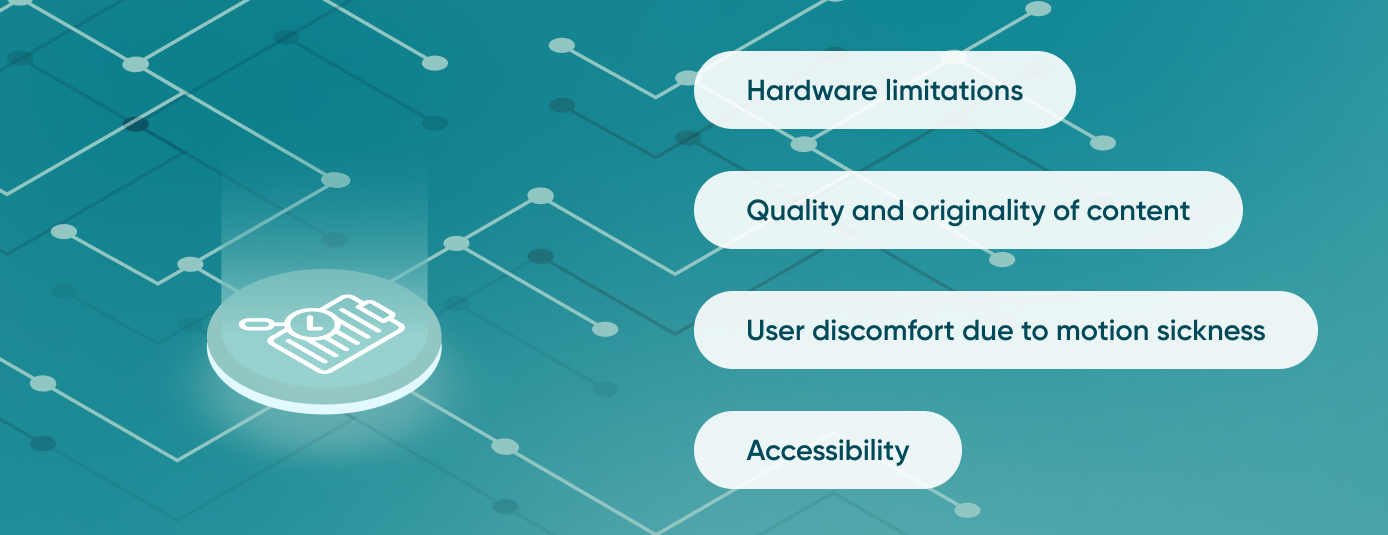Business IT: Exploring AR, VR and MR Technologies


Filmmakers, video game developers, and similar professionals have used computer-generated images for decades. Today, the introduction of artificial intelligence (AI) and other advanced technologies has empowered businesses of all sizes to leverage this same technology.
This, in turn, has accelerated the development and adoption of technologies like augmented reality (AR), virtual reality (VR), mixed reality (MR), and other immersive fields.
But how will this trend affect your business? And how can you implement this innovative content format into your business plan?
Below, we’ll discuss the definition of AR, VR, MR, and other immersive tools that you can leverage in your company.
We will also share the main hardware considerations you need to keep in mind, the fields that will be affected the most by immersive technology, and the challenges you’ll need to overcome to implement this into your company.
Understanding augmented reality
First, let’s take a moment to discuss AR’s meaning.
In simple terms, augmented reality is a type of technology that allows you to layer digital images and other information on top of real-world environments. The main goal of AR in a business setting is to use digital information to create an interactive and engaging experience.
In other words, augmented reality apps have the ability to alter and enhance our surroundings, but they don’t fully immerse users into a digital world.
In addition to images, adopting an augmented reality framework as part of your software allows you to utilise stimuli such as sounds, video footage, and in some cases, other senses like touch.
Let’s go over some of the key elements of AR technology.
Integration with the real-world
AR gives you the ability to integrate and position digital content into your audience’s real-world environment. In these cases, users have the potential to see digital and physical elements at the same time, which is a game changer for training software developers and simulation platform providers.
Contextual responses and interactions
In addition to layering a digital mantle on the real world, AR also enables users to interact with these partially virtual environments. To include this feature, your AR platforms need to understand the user’s physical location and context as this will allow for the placement of elements like arrows and other signals.
Marker-enabled and markerless AR
There’s a major difference between developing markerless and marker-enabled AR. In short, marker-enabled AR devices layer digital content onto the world only when triggered by a QR code or similar stimulus. Markerless AR, on the other hand, works without the need for special images or other types of triggers.
Exploring virtual reality
Virtual reality technology shares similarities with AR, but the experience in itself is unique in its own way.
VR technology allows you to create fully digital, immersive worlds that users can explore and interact with. Contrary to AR, virtual reality completely replaces the environment around a user, completely transporting this person into a universe of your making.
It’s important to note that immersive VR worlds usually feature 3D-rendered images and high-definition graphics. Nonetheless, you are the master of your own VR universe, so you can use animations and elements that align with your brand and overall culture.
Here are some of the elements you’ll want to keep in mind during a virtual reality development project.
Full immersion and virtual interactions
The simulated environments of a VR world are completely customisable. You can choose if you want to replicate real places, build fantasy universes from scratch, or even author alien worlds based on sheer imagination. However, this also means that you’ll block out the user’s physical surroundings, which changes the application as well as the technical requirements of the VR platform.
Stereoscopic UX
At this point, you’ve probably heard, researched, and mastered the term user experience (UX) while on your quest to build a successful brand. A similar concept applies to 3D immersive experience, and it’s known as stereoscopic UX. Getting this is essential as it will help ensure the user is engaged and safe while using the VR platform.
Motion tracking
In addition to the stereoscopic UX, which focuses on how users see the virtual world around them, you also need to fine-tune your platform’s motion tracking in order to deliver a consistent experience. Simply put, this is the area that adapts to the surroundings based on the user’s viewpoint, head position, and body movements.
Introducing mixed reality
Mixed reality (MR) is another type of immersive application you can leverage in your project. MR technology contains traits of both AR and VR – but the goal is to mix reality with digital elements in a way that allows them to coexist, interact, and enhance each other.
Now that we’ve discussed the MR meaning, let’s go over three traits that are unique to this type of platform.
The blending of realities
Just like AR, MR platforms also need the ability to blend both digital and real-world elements. The difference, however, lies in how these two worlds react and coexist with each other.
As the name suggests, AR platforms tend to augment physical elements. This usually means the addition of directional markers, descriptions, and instructions onto existing physical objects like roads and walls.
In mixed reality, digital objects are not only layered on top, but they can actually react to changes in the physical environment.
AR and VR in action
We mentioned this briefly before, but MR has elements of AR and VR. How is this possible?
It’s actually quite simple – MR experiences can evolve from fully immersive to partially immersive.
This means that your virtual experience can start by including physical objects and transition to a fully digital environment, depending on what your game or product needs.
Real-time interaction
Finally, you need to have developers who know how to tie this all together and provide real-time interactive experiences to your users.
In other words, you need to make sure that users in your VR world see a response to their actions as soon as they occur, rather than seeing a lag that can compromise the entire experience.
Other extended reality (XR) technologies
We’ve covered the difference between MR, AR and VR, but it’s also important to understand extended reality (XR), which is the umbrella term that encompasses this type of 3D technology.
In short, XR focuses on using either exclusively digital or a combination of virtual and physical content to enhance the boundaries of human perception.
Let’s take a look at other forms of XR technologies we haven’t discussed yet.
Haptic feedback
Haptic feedback is a type of immersive technology, but it focuses on another sense besides sight: our ability to feel.
In simple terms, haptic gloves and similar devices mimic tactile sensations, which can be used to create effects that enhance the immersive experience.
Other types of sensory feedback devices
Sensory feedback devices go beyond the sensation of touch.
While still in the early stages, leading experts are currently perfecting devices that stimulate senses like smell and taste in order to produce more realistic experiences that encompass all the senses.
Full panoramic photography and filmography
One of the best applications for immersive technologies is the creation of full panoramic scenes that allow viewers to experience a specific location. This can become an even bigger part of verticals like the tourism industry and aid in areas like:
- The ability to evaluate accommodation options more thoroughly.
- Better previewing of tourist attractions.
- Online experiences that help remote users visit and experience attractions at a distance.
The hardware behind immersive technologies

It doesn’t matter if you’re considering MR vs AR vs VR or using a combination of all three, you need to keep several hardware considerations in mind when creating a product or application infused with these technologies.
This will help ensure a great experience for every user who ventures into your virtual or augmented world.
Here are some of the types of hardware elements you need to consider and potentially create software for.
- Headsets
- High-powered CPUs and servers
- Graphic cards
- Memory
- Storage
- Audio
- Sensors
- Tracking
- Input devices
- Bluetooth connectivity
AR and MR for real-world applications
The real-world application of mixed, virtual, and augmented reality software can vary based on your product or project.
Our team has the experience to identify areas where immersive technology can enhance your user experience and the technical skills to create powerful tools that support your customers and team members alike.
Want to learn more? Contact Go Wombat today and our team will be glad to help.
Challenges and limitations of immersive technologies

Augmented, mixed, and virtual reality applications will become more common in the next decade. That said, there are many challenges that this industry needs to overcome in order to achieve its projected potential. Let’s take a closer look at these obstacles.
Hardware limitations
As we mentioned earlier in this post, you need to keep in mind that immersive technologies have specific hardware requirements. Besides being expensive to acquire, these may also have a significant operating or rental cost.
Quality and originality of content
There are many differences when creating augmented reality vs virtual reality applications, but one thing you have to keep in mind in both cases is the quality and originality of your content.
This is especially true if you’re creating fantasy worlds designed for users to spend extended periods in.
User discomfort due to motion sickness
One thing you have to plan for is the fact that your immersive experience may produce motion sickness to users, depending on how long they use it and on the sensory stimuli delivered through the devices.
While it may not always be possible to control this through the software itself, you can also advise your users on how to prevent and combat this side effect.
Accessibility
Besides the well-known challenges of implementing MR vs VR vs AR, it’s essential for developers to adapt their platforms to people with different visual, auditory, and mobile abilities.
The exact steps you need to follow here vary based on an array of factors, but the most important thing is to keep your immersive experiences accessible to all people.
Ethical and social considerations
It’s normal for companies to explore virtual reality business applications, but it's equally important to understand and mitigate the ethical and social impact of this technology.
Some of the areas you need to focus on include:
- Privacy and security.
- Manipulation of information.
- Emotional well-being.
- Potential for virtual harassment or abuse.
- Overuse and addiction.
- Potential impact on real-world interactions.
Unlock Success with Premium Software Development
Contact us


Conclusion
There is no doubt that XR technologies like AR, VR, and MR can help you take your products to the next level and enable you to create unique experiences.
However, the success of your immersive platform will depend directly on your software architecture, code quality, and the implementation of additional technologies like stereoscopic UX.
Are you looking for a team of developers who can create a blueprint, find the best software development approach, and support your project throughout its entire lifecycle? Contact Go Wombat and book a consultation today.
How can we help you ?






